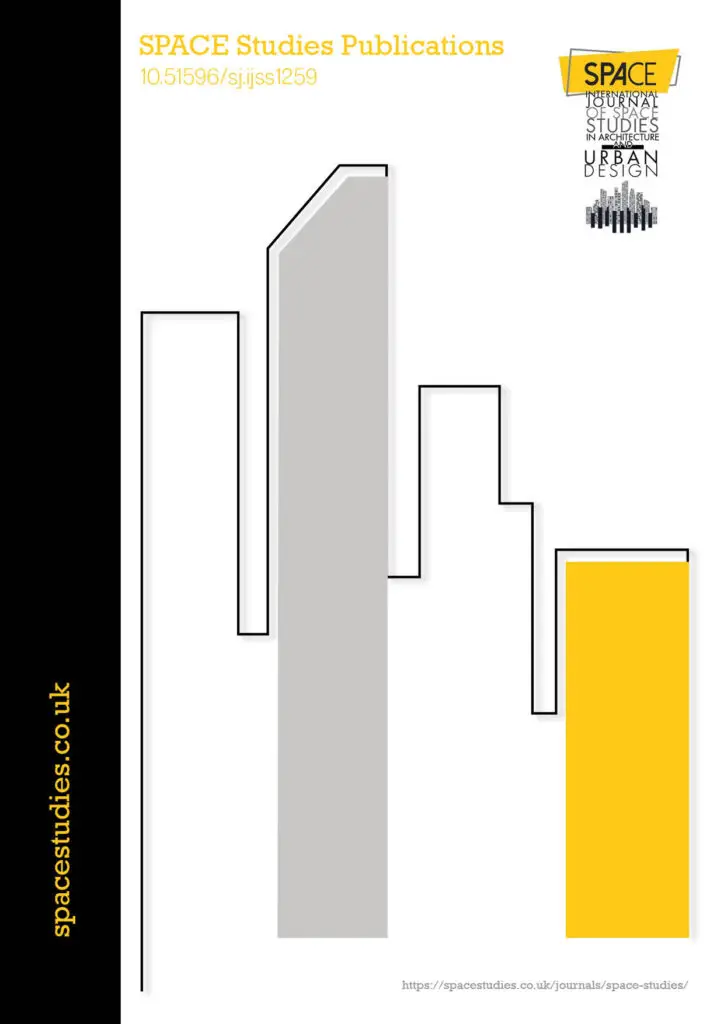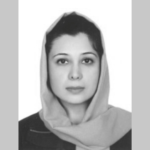
| Author | Institution |
|---|---|
| Amna N. Salman | MSc Candidate, Architectural Engineering, College of Engineering, University of Baghdad, Iraq |
| Rand Agha | Assistant Professor, Department of Architectural Engineering, College of Engineering, University of Baghdad, Iraq |
An intelligent system is a central part of the smart building that enhances adaptable reuse in an existing building. Many researchers agreed on a set of benefits of intelligent buildings, including reducing energy consumption, improving construction efficiency, predictive maintenance, increasing user productivity, better use of resources, and protecting and maintaining security and integrity, in addition to indoor comfort. This study investigates the impact of intelligent systems on the adaptive reuse of traditional cafes in Erbil, Iraq. This is achieved by answering the two research questions:
• Are the changes of traditional cafes in line with the needs of today’s customers?
• To what extent can an intelligent system enhance traditional cafés in Erbil related to current and future users?
Therefore, the main objective of this research was to examine the level of adaptive reuse in traditional cafes in Erbil. To enhance the existing level of adaptation reuse by an intelligent system. An inductive and qualitative research approach was adopted to achieve the defined aim of this research. These methods include an overview of the literature on traditional architecture, adaptive reuse, and intelligent buildings; the data were collected through a physical survey and observation of traditional cafes and interviews with the owners, servers, and visitors in the buffer zone of Erbil Citadel. The key findings: Through this study, we found that the traditional cafes had new themes. The first was spiritual identity through (a) a passive system and (b) spatial aesthetics. Second, there is a need for a new system. The research concluded that adding intelligent systems to traditional cafes through sensors to existing devices makes them intelligent and links them together wirelessly to provide the integration that is the basis of intelligent buildings, in other words, trying to reuse existing devices adaptively. And that traditional cafes deserve to be adaptive and reused continuously and periodically every five years. This will help users to improve the performance of conventional cafes in Erbil.
Restricted Content
This article is restricted. You can purchase access to the individual article or access all articles using a membership with a subscription.
£35.00 per Month.
Student priced discounts on conference registrations, SPACE shop and e-journals. Access to members only areas on the website. Proof of student eligibility required.
Access to Journal subscription.
Endnotes
This paper was presented at the SPACE International Conference 2022 on Architecture, Building, and Construction and selected for publication in this Journal.
References
Agha, Rand HM (2016), “The role of intelligent systems in traditional courtyard houses in Baghdad, Iraq” Newcastle University, School of Architecture, Planning and Landscape, PhD Thesis, http://theses.ncl.ac.uk/jspui/handle/10443/4063
Al-Muqaram, Asmaa M.H, Al Dabbagh, Shamael M.W, Shatha F. and Al-Bahadly, Hussein (2016), “Adaptive Reuse in Valuable Building Through the Adoption of Change in the Circulation Configuration” Engineering and Technology Journal, Vol 34, Issue 6 Part (A) Engineering, p180-199, https://www.iasj.net/iasj/issue/6887
Amirhosein Ghaffarianhoseini, Umberto Berardi, Husam AlWaer, Seongju Chang, Edward Halawa, Ali Ghaffarianhoseini & Derek Clements-Croome (2016), What is an intelligent building? Analysis of recent interpretations from an international perspective, Architectural Science Review, Vol 59, Issue 5, p 338-357, https://doi.org/10.1080/00038628.2015.1079164
Bell, Tom (2019), 5 Key Benefits of Smart Buildings, trueoccupancy.com, https://www.trueoccupancy.com/blog/5-key-benefits-of-smart-buildings
Brambley, M.R., Haves, P., McDonald, S.C., Torcellini, P.A., Hansen, D.G., Holmberg, D.G., & Roth, K. (2005). Advanced Sensors and Controls for Building Applications: Market Assessment and Potential R&D Pathways, Semanticscholar, https://doi.org/10.2172/1217909
CABA Continental Automated Building Association. (2002) Best-practice guide for evaluating intelligent building technologies. Ottawa, Canada.
Clements-Croome, D. J. 2013. “Sustainable Healthy intelligent Buildings for People.” In Intelligent Buildings: Design, Management and Operation. 2nd ed., p 1–24. London: ICE Publishing. http://dx.doi.org/10.1680/ib.57340.001
Clements-Croome, D. J. 2018, Research Roadmap for Intelligent and Responsive Buildings, CIB General Secretariat, ISBN 978-90-803022-9-7
Danyal Ahmed (2021) Anthropomorphizing artificial intelligence: towards a user-centered approach for addressing the challenges of over-automation and design understandability in smart homes, Intelligent Buildings International, 13:4, 227-240, https://doi.org/10.1080/17508975.2020.1795612
Derek Clements-Croome (2021) Editorial, Intelligent Buildings International, 13:4, 201-202, https://doi.org/10.1080/17508975.2021.1995955
Dilantha, De Silva and Perera, Kanchana K.S. (2016), “Barriers and Challenges of Adaptive Reuse of Buildings”, Conference: Institute of Quantity Surveyors Sri Lanka annual technical sessions 2016, Retrieved from https://www.researchgate.net/publication/319879628_Barriers_and_Challenges_of_Adaptive_Reuse_of_Buildings
DiLouie, Craig (2008). Lighting controls handbook. Lilburn, Ga. [u.a.]: Fairmont Press [u.a.] p. 239. ISBN 1-4200-6921-7.
Don, Peter (2010) “Characteristics of Traditional Architecture”, Retrieved from DoItYourself.com, https://www.doityourself.com/stry/characteristics-of-traditional-architecture
Douglas, James (2006) “Building Adaptations” Published by Elsevier Ltd. Heriot-Watt University, Edinburgh, UK. ISBN-13: 978-0-7506-6667-1. ISBN-10: 0-7506-6667-6
ECA, 2020, Electrical system, Designing Buildings, Retrieved from https://www.designingbuildings.co.uk/wiki/Electrical_system#:~:text=An%20electrical%20system%2C%20within%20the,that%20consume%20the%20electrical%20energy
Edler, J. and T. Edler. 2006. Message vs. Architecture? Dynamic Media as a Continuation of Architecture. Game Set and Match II: on Computer Games, Advanced Geometries and Digital Technologies: 181-189. Rotterdam: Episode Publishers
Hawkins, Andrew. 2016, “This hoverboard startup wants to create floating cities to combat climate change”. The Verge. Retrieved from https://www.theverge.com/2016/10/27/13418576/arx-pax-floating-cities-climate-change-hendo-hoverboard
Hegazi, Y.S.; Shalaby, H.A.; Mohamed, M.A.A. Adaptive Reuse Decisions for Historic Buildings in Relation to Energy Efficiency and Thermal Comfort—Cairo Citadel, a Case Study from Egypt. Sustainability 2021, 13, 10531. https://doi.org/10.3390/su131910531
Ir. Dr. Sam C. M. Hui, 2016, Intelligent buildings, Faculty of science and technology, GEE5303 Green and Intelligent Building, Thei, http://ibse.hk/GEE5303/GEE5303_1617-09.pdf
James Sinopoli, 2010, Chapter 1 – What Is a Smart Building? Smart Building Systems for Architects, Owners and Builders, Butterworth-Heinemann, Pages 1-5, ISBN 9781856176538, https://doi.org/10.1016/B978-1-85617-653-8.00001-6
John Joseph, 2018, Facility Design and Process Utilities, Biopharmaceutical Processing (pp.933-986), https://doi.org/10.1016/B978-0-08-100623-8.00045-1
Joseph Aamidor, 2016, The three types of smart building systems: the way forward for practitioners and vendors, medium, Retrieved from, https://medium.com/@jaamidor/the-three-types-of-smart-building-systems-the-way-forward-for-practitioners-and-vendors-bccdf9d005f4#:~:text=Open%20in%20app-,The%20three%20types%20of%20smart%20building%20systems%3A%20the,forward%20for%20practitioners%20and%20vendors&text=Information%20system%3A%20Acquires%20data%20from,and%20action%20to%20be%20taken
Kenneth R. Dodson, RLA, and Brad Kincaid, SME, 2021,2021, Thee to Smart Building Technologies, Retrieved from, https://www.cisco.com/c/dam/m/en_us/solutions/smart-building/nb-06-smart-building-technologies-guide/Smart-Building-Guide.pdf
Kerim Yildiz (2004), the Kurds in Iraq: the past, present and future, Pluto Press, ISBN-10: 0745322298, ISBN-13: 978-0745322292
Key Components of Fire Protection Systems, Retrieved from, https://www.facilitiesnet.com/firesafety/article/Key-Components-of-Fire-Protection-Systems–18677#:~:text=Fire%2Dprotection%20and%20life%20safety,%2C%20and%20fire%2Dsuppression%20systems.&text=These%20barriers%20are%20arranged%20to,spread%20of%20a%20standard%20fire
Khoshnaw, Rebaz and Kissfazekas, Kornélia. 2019. Urban form and sustainability in historic cities A case study of two neighbourhoods in Erbil city, Iraq. akjournals. Volume 47: Issue 1-2, https://doi.org/10.1556/096.2018.014
Kurdistan Region Government, Ministry of planning, Regional statistical office. Erbil: statistic year book, 2007.
Kwon, O., E. Lee, and H. Bahn. 2014. “Sensor-aware Elevator Scheduling for Smart Building Environments.” Building and Environment Vol 72, p 332–342. https://doi.org/10.1016/j.buildenv.2013.11.013
Mario, 2021, Video Surveillance Systems, 231 West 29th Street 8th Floor, New York, NY 10001, Retrieved from https://www.buildingsecurity.com/video-surveillance-systems/
Matias Peluffo, 2015, Defining Today’s Intelligent Building, Commscope, Retrieved from https://www.commscope.com/Blog/Defining-Todays-Intelligent-Building/
Mohsen Sheikholeslami Kandelousi, 2018, HVAC System, Intechopen, ISBN: 1789844320, 9781789844320
Mojtaba Navvab, Stefano Panzieri (2019) in Handbook of Energy Efficiency in Buildings, Elsevier Science, ISBN:9780128128183
Osama Omar,2018, Intelligent building, definitions, factors and evaluation criteria of selection, Alexandria Engineering Journal, Vol 57, Issue 4, P 2903-2910, ISSN 1110-0168, https://doi.org/10.1016/j.aej.2018.07.004
Paul Ehrlich, 2007, What Is an Intelligent Building?, 1st Edition, p 6, ISBN: 9781003151234, https://www.taylorfrancis.com/chapters/edit/10.1201/9781003151234-4/intelligent-building-paul-ehrlich
Prihatmanti, Rani and Susan, Maria Yohana (2017), “Adaptive reuse of heritage building and the impact to the visual comfort: Assessed by the lighting quality” IPTEK Journal of Proceedings Series, No 3, http://dx.doi.org/10.12962/j23546026.y2017i3.2443
Rav Panchalingam & Ka C. Chan (2021) A state-of-the-art review on artificial intelligence for Smart Buildings, Intelligent Buildings International, 13:4, 203-226, https://doi.org/10.1080/17508975.2019.1613219
Roth K. W., Westphalen D., Dieckmann J., Hamilton S. H., and Goetzler W. 2003, Energy consumption characteristics of commercial building HVAC systems. 3. Energy savings potential. Us department of commerce, ntis (national technical information service) TIAX LLC 20 Acorn Park Cambridge, MA 02140-2390 TIAX Reference No. 68370-00
Šumak, Boštjan, Saša Brdnik, and Maja Pušnik. 2022. “Sensors and Artificial Intelligence Methods and Algorithms for Human–Computer Intelligent Interaction: A Systematic Mapping Study” Sensors, Vol. 22 Issue 1, p20-20. https://doi.org/10.3390/s22010020
Suzi Mein, 2019, What is a Fire Protection System, Firetrace, Retrieved from https://www.firetrace.com/fire-protection-blog/what-is-a-fire-protection-system
Tam, Vivian W. Y. and Hao, Jane J. L. (2018), “Adaptive reuse in sustainable development”, International Journal of Construction Management, Vol 19, Issue 6, p 509-521, https://doi.org/10.1080/15623599.2018.1459154
Todd Harpel (2019) The benefits of Intelligent Buildings, https://www.nexans.com/business/Telecom—Data/Local-area-network/lan_systems_blog/lan_systems_blog_posts/13.2019-IntelligentBuildings_II_benefits.html
Tom Bell (2019), 5 Key Benefits of Smart Buildings, TrueOccupancy by irisys, retrieved from https://www.trueoccupancy.com/blog/5-key-benefits-of-smart-buildings
Torem, Emily (2017) “Adaptive Reuse Architecture: why, how and when”, Schmidt Associates, Retrieved from http://moss-design.com/adaptive-reuse-architecture/
Yongtao Tan,* Chenyang Shuai, and Tian Wang 2018, Critical Success Factors (CSFs) for the Adaptive Reuse of Industrial Buildings in Hong Kong, international journal for environment research and public health, Vol15, issue 7, https://doi.org/10.3390/ijerph15071546
Yung, Esther H.K. and Chan, Edwin H.W. (2012), “Implementation challenges to the adaptive reuse of heritage buildings: Towards the goals of sustainable, low carbon cities”, Habitat International, Vol 36, Issue 3, P 352-361, https://doi.org/10.1016/j.habitatint.2011.11.001
Disclosure Statement
No potential conflict of interest was reported by the author(s).
Biographical Notes on Contributors
Amna N. Salman is an MSc student in Architecture Engineering at the College of Engineering, University of Baghdad. She earned a bachelor’s in architectural engineering in 2018 and was an assistant in Architecture Engineering at the College of Engineering, Tishq International University. She worked in the practical field as a project manager, architect, and graphic designer. Finally, she participated in many architectural competitions.
Rand Agha is an assistant professor in Development Architecture Engineering at the College of Engineering, University of Baghdad. She received a bachelor’s in architectural engineering in 1995 And a master’s in interior architecture in 2001, both from the University of Baghdad. She also received a PhD in intelligent building in 2016 from Newcastle University in the United Kingdom. She has published many research papers and books. Finally, she has won many prizes in design projects and as a researcher.
Sign in to continue
Not a member yet? Sign up now

Administrative Assistant
Deniz Bol is the Administrative Assistant at SPACE Studies, where she supports the day-to-day operations and contributes to the smooth functioning of the organization. Alongside her administrative role, Deniz is an artist with a passion for creative expression. She is currently pursuing her studies at the University of the Arts London (UAL), where she continues to develop her artistic practice. Her organizational skills, paired with her artistic background, make her a valuable asset to the SPACE Studies team, helping bridge the worlds of administration and creativity.
E-mail: denizbol@spacestudies.co.uk

Digital Marketing Consultant
Murat Oktay is the Digital Marketing Consultant at SPACE Studies, where he provides strategic guidance to enhance our digital presence and community engagement. With a keen eye for digital marketing trends and best practices, Murat plays a key role in refining our content strategy, expanding our online reach, and connecting with a wider audience. His expertise in digital tools and innovative marketing techniques aligns with SPACE Studies’ mission as a social enterprise, ensuring that our campaigns are impactful and resonate with our commitment to social responsibility in architecture and design. Outside his work with SPACE Studies, Murat stays at the forefront of digital marketing advancements, continually exploring new tools and sharing his insights with peers.
E-mail: muratoktay@spacestudies.co.uk

Marketing Manager
Santa Noella Matabaro is the Marketing Manager of SPACE Studies, bringing her expertise in strategic planning, community engagement, and relationship-building to the organization’s mission as a social enterprise. With a background in Politics & Law from the University of Kent, Santa combines analytical insights with a creative approach to advancing SPACE Studies’ vision of fostering interdisciplinary dialogue in architecture, design, and urban planning. In her role, she develops targeted campaigns and strategic partnerships, building brand presence and fostering meaningful connections with the community. Santa’s collaborative and people-centered approach enhances SPACE Studies’ impact, aligning with its commitment to social responsibility and innovation in the built environment.

Academic Content Coordinator
Betul Uckan is an architect and dedicated academic with a background in both architectural practice and research. She holds a Master of Science in Architectural Design and a Bachelor’s degree in Architecture from Istanbul Technical University, where she cultivated her interests in architectural theory and design. Betul has gained experience as a research assistant in various universities, contributing to design studios and foundational courses. She has also worked in the field as an architect with projects focused on design, modeling, and construction, and has been involved in notable projects, including Maltepe Piazza and Emaar Square in Istanbul. With her expertise spanning both digital and material architecture, Betul brings a dynamic, interdisciplinary approach to her role as the Academic Programme Coordinator.
E-mail: betuluckan@spacestudies.co.uk

Senior Researcher & Managing Editor
Arghavan Pournaderi is a senior researcher in the field of architectural conservation and restoration, with an academic foundation in architecture and specialized expertise in historic sites and buildings. Completing her PhD at the Art University of Isfahan, Iran, in 2019, her research has contributed to the understanding of Iran’s architectural heritage, with a focus on Isfahan’s urban and architectural evolution during the Safavid period. In addition to her extensive research, Dr. Pournaderi has held academic positions at various institutions in Isfahan, teaching at both undergraduate and graduate levels. Her work extends beyond academia as she contributes to SPACE Studies as Senior Researcher & Managing Editor, where she oversees scholarly initiatives that foster deeper interdisciplinary dialogue in architecture and heritage conservation.

Senior Researcher & Educational Consultant
Gregory Cowan is a Senior Researcher and Educational Consultant at SPACE Studies, where he leads initiatives that bridge academic research and practical application in architecture and urban design. He contributes his extensive experience to mentoring postgraduate students, designing educational workshops, and guiding community-focused projects. Gregory is also a freelance academic at the University of Wales Trinity St David and the University of Westminster, and founder of The Architects Coach. His expertise spans architectural workspace analysis, professional development, and positive intelligence coaching.
E-mail: gregorycowan@spacestudies.co.uk

Senior Researcher
Alison Hand is a Senior Researcher at SPACE Studies. She is a painter and writer with an MA in Painting from the Royal College of Art. Alison’s work focuses on creating absurd, unstable heterotopic spaces and dialogues with painting history. She is currently the Artist in Residence for King’s College London Philosophy Department on the Dreams and Wakeful Consciousness Research Project, exploring themes of time and simultaneity in new work. Alison has received numerous awards for her painting and is currently working with Bloomsbury Publishers on a major essay on Drawing in Contemporary Art. She is also the BA Fine Art Programme Leader at Art Academy London and co-director of Cement Arts. Her role at SPACE Studies involves leading research projects, mentoring junior researchers, and contributing to our artistic and academic initiatives.
E-mail: alisonhand@spacestudies.co.uk

Senior Researcher
Julian Wild is a Senior Researcher at SPACE Studies and the Sculpture Program Leader at The Art Academy London. With over 30 years of experience in creating and exhibiting sculptures, Julian has worked with high-profile clients such as Cate Blanchett and the University of Oxford. A fellow and former vice president (2015-2019) of the Royal Society of Sculptors, his work has been featured at venues like Modern Art Oxford and Chatsworth House. At SPACE Studies, Julian leads research projects, mentors junior team members, and conducts workshops that blend art and urban studies. In his free time, he enjoys attending academic conferences and crafting new sculptures.
E-mail: julianwild@spacestudies.co.uk

Director of Publications & Senior Researcher
Elif Suyuk Makakli (Associative Professor) earned her PhD in Architecture from the Vienna University of Technology, where she studied the impact of technology on architecture under Prof. William Alsop. With extensive experience in architectural practice in Istanbul and Vienna, she is now an Associate Professor at FMV Isik University, focusing on design education and technology. At SPACE Studies, Elif serves as both the Head of Publications and Senior Researcher, guiding scholarly content and contributing to research initiatives. She is dedicated to mentoring and fostering design innovation.
E-mail: elifsmakakli@spacestudies.co.uk

Director of Research
Sanaz Shobeiri is an architect, urban designer, and landscape urbanist, currently a postdoctoral researcher in the Department of Planning at Queen’s University Belfast. Her research focuses on age-gender inclusiveness and the interplay of architectural, historical, political, and sociocultural dimensions in urban spaces, exemplified by her project on city centres in Belfast and Tehran. Sanaz holds a PhD in Urban Planning from the University of Tehran and has a robust portfolio in sustainability and urban theory. As Head of Research at SPACE Studies, she leads innovative research initiatives, fostering collaboration and academic excellence. In her free time, Sanaz enjoys exploring urban landscapes and supporting community development.
E-mail: sanazshobeiri@spacestudies.co.uk

Creative Director
Selin Gulce Sozmen is the Creative Director at SPACE Studies, where she leads the artistic vision and design strategy for the organisation. With a background in graphic design and visual arts, Selin has been instrumental in creating visually captivating books, journals, and event posters. Her role extends to developing and coordinating workshops and creative projects, ensuring that all visual materials meet the highest standards of quality and innovation. Selin’s dedication to creativity and excellence drives the visual and creative direction of SPACE Studies, making her an essential part of the team.
E-mail: selinsozmen@spacestudies.co.uk

Founder & Executive Director
Pinar Engincan is the Founder and Executive Director of SPACE Studies, an innovative social enterprise focused on fostering interdisciplinary dialogue and education in architecture and urban design. With extensive experience as a lecturer and researcher, Pınar holds a PhD in Architecture and has led numerous academic initiatives. Her career includes curriculum development, international collaborations, and research on housing and urban policies. Passionate about bridging academia and community, she champions accessible education and consultancy services, empowering individuals to shape the built environment.
E-mail: pengincan@spacestudies.co.uk